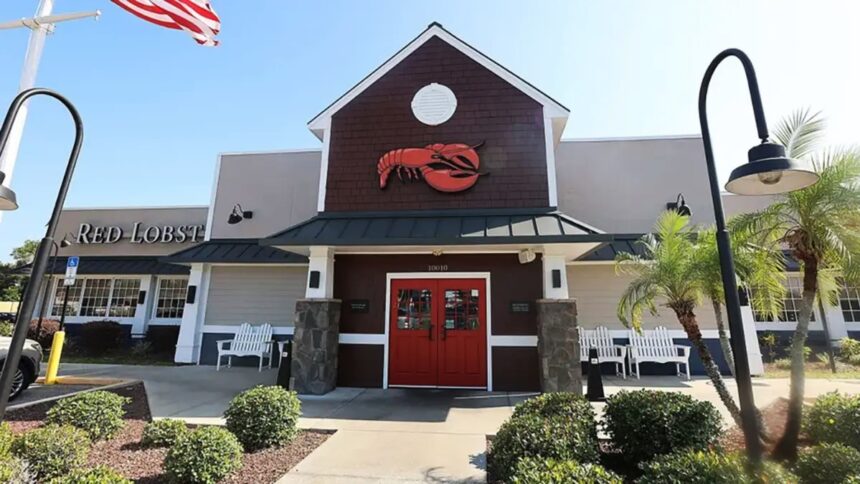Reportedly, Red Lobster is thinking about declaring bankruptcy in order to release itself from the financial strains that have been plaguing the business.
In order to renegotiate costly leases and resolve other long-term obligations as well as growing labor expenses, Red Lobster is considering filing for Chapter 11 bankruptcy, according to a report by Bloomberg citing people familiar with the conversations.
According to the outlet, King & Spalding, a law company, is advising the chain of seafood restaurants on the matter. While talks for restructuring are still in progress, no decisions have been made regarding filing for bankruptcy.
The firm might proceed with its operations while collaborating with investors and creditors to establish a debt reduction strategy that would enable it to maintain a stronger financial position going forward by declaring Chapter 11 bankruptcy.
A factor in the third quarter’s operating loss was Red Lobster’s ultimate endless shrimp deal
A remark was requested, but Red Lobster did not answer right away.
Originally a single seafood restaurant with the goal of providing premium seafood at reasonable costs, Red Lobster was founded in 1968 by Bill Darden in Lakeland, Florida.
But in spite of its early success and quick growth, the company has recently been under increasing financial strain. Red Lobster’s financial difficulties have been exacerbated by a number of factors, including evolving consumer preferences, heightened competition, and the worldwide economic depression brought on by the pandemic.
The firm, which is well-known for its laid-back eating style and extensive selection of seafood dishes, has been struggling with a drop in income and sales. Red Lobster has tried a number of tactics to adjust to the shifting market conditions, such as cost-cutting initiatives and menu improvements, but these have not been enough to overcome the difficulties the company confronts.
According to reports, Red Lobster is thinking about declaring bankruptcy as a possible way to reorganize its business and obligations. Although there hasn’t been an official statement released as of yet, those with knowledge of the situation indicate that the firm is actively considering its alternatives and collaborating with financial consultants to manage its financial challenges.
In the wake of the epidemic, an increasing number of restaurant businesses and stores have filed for bankruptcy, and Red Lobster would be the next to do so. In an attempt to emerge stronger and more resilient in the post-pandemic scenario, Red Lobster would be able to reorganize its finances, renegotiate leases, and perhaps shut failing outlets with this move.
After acquiring the business in 1970 and assisting in its quick growth across the United States and Canada, General Mills spun it off more than 20 years later to become Darden Restaurants, a separate publicly listed corporation.

In 2014, Golden Gate Capital purchased Red Lobster from Darden Restaurants. In 2021, Thai Union, which had previously owned a quarter of the business, acquired Golden Gate’s ownership interest.
Thai Union stated in a regulatory statement earlier this year that it intended to write off its Red Lobster investment, citing the restaurant chain’s “ongoing financial requirements no longer align with Thai Union’s capital allocation priorities.”
Jonathan Tibus was appointed Red Lobster’s new CEO last month. Tibus has spearheaded many restructuring initiatives and is regarded as a specialist in creating and carrying out restructuring plans at struggling eateries, retail establishments, and hospitality businesses.
Read More: Donald Trump’s Election Rally Features ‘Genocide Joe’ Slogans; Former US President Doesn’t Dispute






